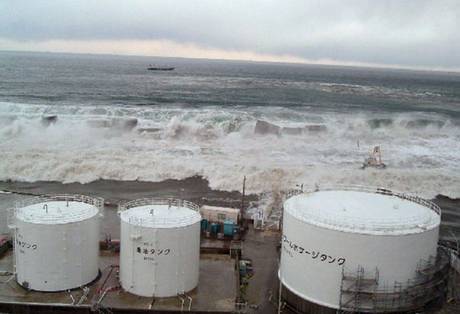
In the wake of a typhoon that lashed Tokyo, Japan’s already-devastated Fukushima plant has increased its radioactive output twofold over the course of one night. Levels are now 14,000 times what is considered safe, as irradiated water continues to seep out of the facility and into the sea.
The Tokyo Electric Power Company (TEPCO), which had come under fire for allegedly misleading the public about the amount of radiation leaking, has finally admitted that toxicity is at an all-time high since August, when irradiated water leaked from a storage tank in the facility. Water samples taken at one location near the site on October 23 were measured at 140,000 becquerels per liter – twice the amount that was measured the previous day at the same location. Such a level is dangerous enough to cause cancers including leukemia.
The radiation increase is partly related to heavy rains caused by Typhoon Wipha, which caused 12 water storage tanks to overflow. Even now that the storm has ended, continuous rain has been pushing irradiated dirt and water into previously clean areas, which has caused not only an uptick in radiation, but has helped it spread over a greater distance.
Environmentalist Azby Brown, who is a volunteer with the Safecast independent radiation monitoring organization, said, “In terms of the ocean, this is definitely an environmental catastrophe, and it’s still ongoing. Damage has been done in particular to the ocean floor near Fukushima, and it will take a long time to heal. Our only real option is to wait for nature to take its course.” In the meantime, he added, “we have to redouble our efforts to fully understand the health consequences” of the radiation problem, “because that will help us prepare for the [continuing fallout] from Fukushima.”
It’s also quite telling that as of October 21, the Japanese government has extended the Fukushima cleanup deadline to 2017; that’s a drastic change from the initial end-date. Originally, the radiation was expected to be completed by March 2014. But the government’s environmental ministry has now admitted the obvious: decontamination of the site and the surrounding area is going to be a lengthy, complicated process.
Now, to make matters worse, the city is expected to get hit with another big storm in Wipha’s wake: Typhoon Francisco is expected to batter Japan with more rain this weekend. The chaos continues.
Photo: Tumultuous waves get dangerously close to the Fukushima site. AP












Comments